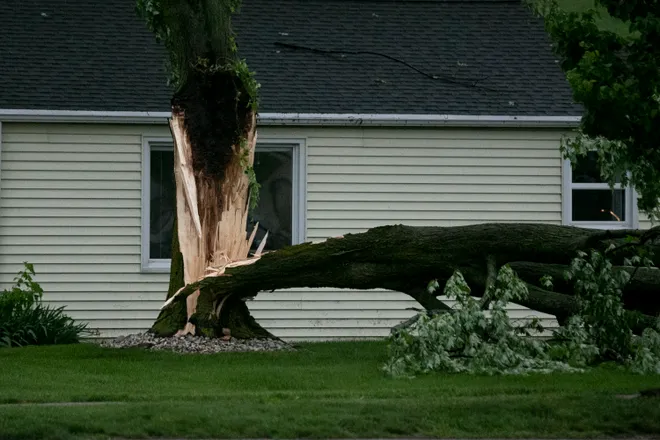Factors influencing tree removal costs in Brisbane
Removing a tree from your property is not as simple as it may seem.
The process involves more than just cutting it down.

There are numerous factors that influence tree removal costs. These include the size and type of the tree, its location, and its condition.
Understanding these factors can help you anticipate the potential costs. It can also guide you in choosing the right tree service provider.
In this article, we delve into these factors in detail. We also explore related services like tree trimming and pruning, and discuss region-specific costs, such as tree removal in Brisbane.
Our aim is to provide you with a comprehensive guide to tree removal costs. This will help you make informed decisions when it comes to maintaining the trees on your property.
Understanding Tree Removal Costs
Tree removal costs can vary widely. This is due to the many factors that come into play.
The size and type of the tree, its condition, and its location all contribute to the overall cost.
Additionally, the method of removal and the need for any special equipment can also affect the price.
Lastly, the cost of cleanup and disposal, as well as any necessary permits, are also part of the total cost.
The Size of the Tree
The size of the tree is one of the main factors influencing the cost of removal.
Larger trees require more time and resources to remove. They also pose a greater risk, which can increase the cost.
- Small trees (up to 30 feet): Low cost
- Medium trees (30-60 feet): Moderate cost
- Large trees (60-100 feet): High cost
- Very large trees (over 100 feet): Highest cost
Tree Species and Type
The species and type of the tree can also affect the cost of removal.
Some trees have harder wood, which is more difficult to cut. Others may have complex branch structures that require more time to safely remove.
For instance, removing a pine tree might cost less than removing an oak of the same size. This is due to the difference in their wood hardness and structure.
Tree Condition and Health
The condition and health of the tree play a significant role in determining the cost.
Dead or diseased trees can be more hazardous to remove. This is because they are more unpredictable and can pose a risk to the workers and property.
On the other hand, healthy trees are usually easier and safer to remove, which can lower the cost.
Location and Accessibility
The location and accessibility of the tree can significantly impact the cost of removal.
Trees that are close to buildings or power lines require more careful removal. This often means more time and specialized equipment, which can increase the cost.
On the other hand, trees that are easily accessible and away from any structures or hazards are typically less expensive to remove.
Safety and Risk Factors
Safety is a major concern during tree removal. This is especially true for trees that are dead, diseased, or located near structures or power lines.
- Dead or diseased trees: Higher risk, higher cost
- Trees near structures or power lines: Higher risk, higher cost
- Trees in open, accessible areas: Lower risk, lower cost
The need for safety measures and risk management can add to the cost. However, these are essential to ensure the safe and successful removal of the tree.
Additional Costs to Consider
When considering tree removal costs, it’s important to remember that the quoted price often only covers the removal of the tree itself.
There are several additional costs that you may need to consider. These can include stump removal and disposal, cleanup and debris removal, and any necessary permits or legal requirements.
Stump Removal and Disposal
After a tree is removed, the stump is often left behind. Removing this stump is usually an additional cost.
The cost of stump removal can vary depending on the size of the stump and the complexity of the root system. Disposal of the stump can also add to the cost.
Cleanup and Debris Removal
Cleanup and debris removal is another cost to consider. Some tree removal companies include this in their quote, while others do not.
This service involves removing all the branches, leaves, and other debris from your property. The cost can vary depending on the size of the tree and the amount of debris.
Permits and Legal Requirements
In some areas, you may need a permit to remove a tree, especially if it’s of a certain size or species. The cost of this permit can add to the overall cost of tree removal.
Additionally, if local or state laws protect the tree, you may need to pay for a professional arborist report. This report assesses the health of the tree and the necessity of its removal.
Cost Variations by Region: Tree Removal Brisbane Cost
The cost of tree removal can vary significantly by region. For instance, tree removal Brisbane cost may differ from costs in other parts of Australia.
This variation can be due to local regulations, the availability of tree removal services, and the types of trees common in the area.
Seasonal Demand and Off-Season Discounts
Seasonal demand can also affect the cost of tree removal. Spring and summer are typically the busiest seasons for tree services, which can drive up prices.
However, some tree services offer discounts during their off-season. This is usually in the late fall and winter when demand is lower.
Saving on Tree Removal Costs
While tree removal can be costly, there are ways to save. One of the most effective methods is to get multiple quotes. This allows you to compare prices and services, ensuring you get the best value for your money.
Another way to save is by negotiating with service providers. Some companies may be willing to offer discounts or flexible payment options, especially for larger jobs or repeat customers.
Tree Trimming and Pruning: Preventative Measures
Regular tree maintenance, such as trimming and pruning, can prevent the need for removal. These services can help identify potential issues early, reducing the risk of damage and costly removal.
Moreover, regular maintenance can extend the life of your trees. This not only saves you money in the long run but also contributes to a healthier and more beautiful landscape.
DIY vs. Professional Tree Removal
While DIY tree removal may seem like a cost-saving option, it can be dangerous. Without the proper training and equipment, you risk personal injury and property damage.
Professional tree services, on the other hand, have the necessary expertise and equipment. They also carry insurance, which protects you from liability. While this may increase the upfront cost, it can save you from potential expenses and stress in the long run.
Choosing the Right Tree Service Provider
Choosing the right tree service provider is crucial in ensuring quality work and fair pricing. It’s advisable to research and compare several companies before making a decision. Look for providers with a solid reputation, positive reviews, and a history of reliable service.
Remember, the cheapest quote may not always be the best choice. Consider the value and quality of the service, not just the price. A reputable company may charge more, but they often provide superior service and peace of mind.
Insurance and Certification Considerations
When choosing a tree service provider, it’s essential to verify their insurance and certifications. A professional company should have liability insurance to cover any potential damages during the tree removal process. This protects you from any financial responsibility in case of accidents or property damage.
Additionally, check if the company employs certified arborists. These professionals have undergone extensive training and are knowledgeable about safe and effective tree care practices. Hiring a certified arborist ensures that your trees are in capable hands, reducing the risk of improper care that could lead to costly problems down the line.
Conclusion and Next Steps
Understanding the factors that influence tree removal costs can help you make informed decisions and budget effectively. Remember, tree removal is a complex task that requires professional expertise. While it may seem costly, investing in professional services can save you from potential risks and additional expenses in the long run.
As a next step, consider reaching out to several tree service providers for quotes. Be sure to ask detailed questions about their services, insurance, and certifications. This will help you find a reputable provider that offers fair pricing and quality service.
Frequently Asked Questions (FAQs)
Here are some frequently asked questions about tree removal costs:
- Is tree removal covered by homeowners insurance? This depends on the specifics of your policy and the reason for the tree removal. It’s best to contact your insurance provider for accurate information.
- Can I negotiate tree removal costs? Some providers may be open to negotiation, especially during their off-season or for multiple tree removals.
- Is it cheaper to trim or remove a tree? Generally, trimming is less expensive than removal. However, if a tree poses a risk or is diseased, removal may be the most cost-effective solution in the long run.
- Can I remove a tree myself to save costs? While DIY tree removal can be cheaper, it’s also risky and can lead to injuries or property damage. It’s recommended to hire professionals for this task.
